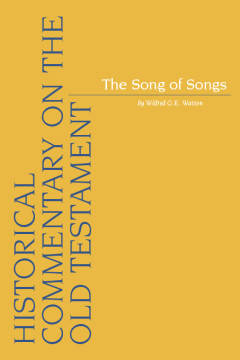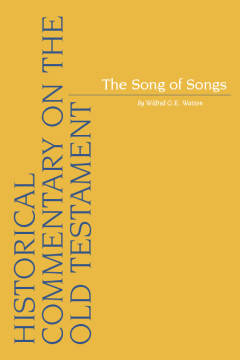
Door een staking bij bpost kan je online bestelling op dit moment iets langer onderweg zijn dan voorzien. Dringend iets nodig? Onze winkels ontvangen jou met open armen!
- Afhalen na 1 uur in een winkel met voorraad
- Gratis thuislevering in België vanaf € 30
- Ruim aanbod met 7 miljoen producten
Door een staking bij bpost kan je online bestelling op dit moment iets langer onderweg zijn dan voorzien. Dringend iets nodig? Onze winkels ontvangen jou met open armen!
- Afhalen na 1 uur in een winkel met voorraad
- Gratis thuislevering in België vanaf € 30
- Ruim aanbod met 7 miljoen producten
Zoeken
€ 88,00
+ 176 punten
Omschrijving
The Song of Songs remains one of the most enigmatic and difficult books to understand. In addition, the text has been fluid, as shown by the Qumran scrolls, although it has reached us in a fairly stable form. There are two main focal points in this commentary. One is language, using comparative Semitics as well as reference to more remote cognates in other languages. The Song of Songs contains a very high number of rare Hebrew words and expressions, some of which are unique twists on well-established forms, and these need to be understood before any attempt is made at deciphering the meaning of the book. In many cases there is no clear-cut solution, so the reader is presented with a series of choices. The other focus is on similar compositions from Egypt - its well-known and extensive love poetry - as well as from Anatolia, Mesopotamia, Syria and elsewhere, which supply an invaluable cultural background. Particular attention is paid to poetic aspects, including comparison with ancient Near Eastern verse patterns. In line with the rest of the series, account is also taken of the many approaches adopted by previous interpreters. The illustrations, black and white versions of original watercolours, help to give this commentary a contemporary appeal.
Specificaties
Betrokkenen
- Auteur(s):
- Uitgeverij:
Inhoud
- Aantal bladzijden:
- 542
- Taal:
- Engels
- Reeks:
Eigenschappen
- Productcode (EAN):
- 9789042952140
- Verschijningsdatum:
- 5/06/2024
- Uitvoering:
- Paperback
- Formaat:
- Trade paperback (VS)
- Afmetingen:
- 163 mm x 241 mm
- Gewicht:
- 857 g

Alleen bij Standaard Boekhandel
+ 176 punten op je klantenkaart van Standaard Boekhandel
Beoordelingen
We publiceren alleen reviews die voldoen aan de voorwaarden voor reviews. Bekijk onze voorwaarden voor reviews.











